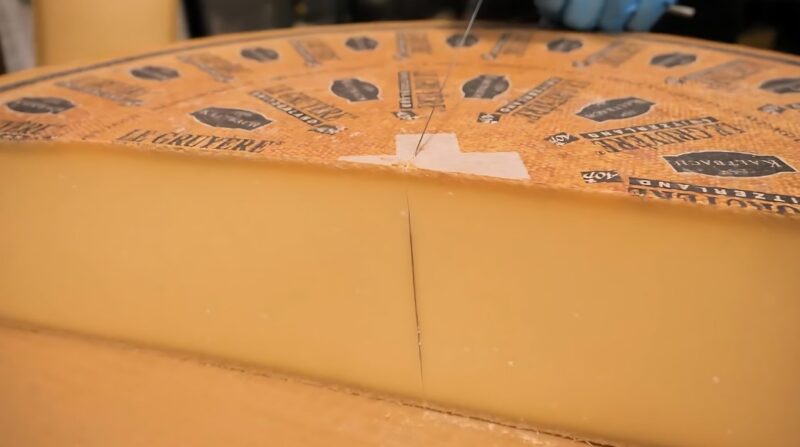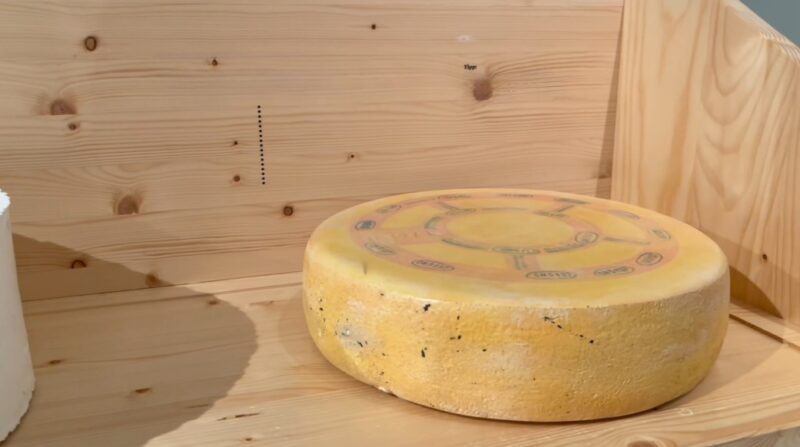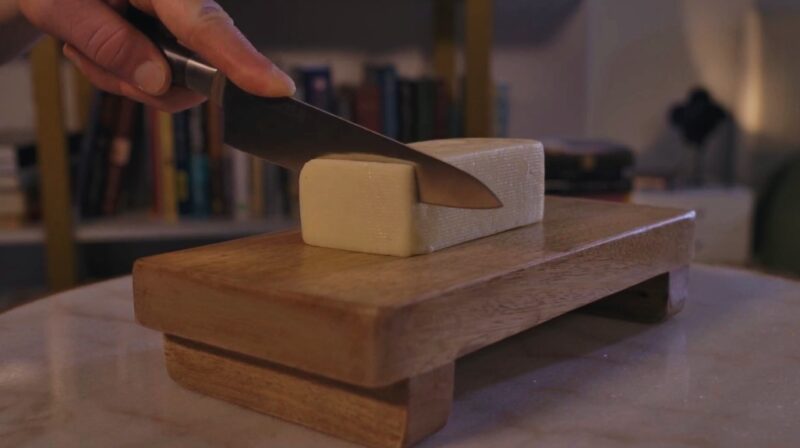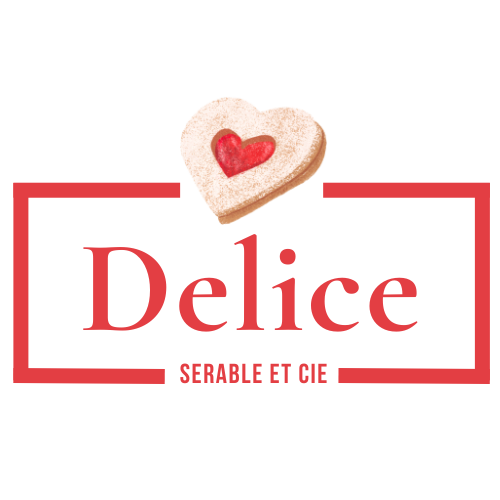So, you’ve got a recipe that calls for Emmental cheese, but surprise, surprise, your fridge is empty.
Emmental might be the king of Swiss cheeses, but let’s face it, it can be a pain to find.
Don’t worry, though—I’ve got your back with a list of ten fantastic substitutes that’ll keep your dish from going to ruin.
Trust me, no one will even notice.
A Quick Look
Cheese
Flavor
Texture
Best Uses
Gruyère
Nutty, slightly sweet
Smooth, creamy
Fondue, quiche, gratin
Jarlsberg
Mild, nutty, sweet
Semi-soft, holes
Sandwiches, cheese boards
Swiss Cheese
Mild, nutty
Semi-soft, holes
Sandwiches, melting, salads
Comté
Rich, nutty, fruity
Firm, melts well
Cooking, cheese boards, melting
Raclette
Buttery, fruity
Semi-hard, melts
Raclette, melting, cooking
Fontina
Mild, nutty, tangy
Semi-soft, creamy
Melting, cooking, cheese boards
Havarti
Buttery, tangy
Creamy, smooth
Sandwiches, melting, cheese boards
Provolone
Sharp, tangy
Semi-soft, melts
Sandwiches, melting, cooking
Edam
Mild, nutty
Semi-hard, smooth
Cooking, cheese boards, melting
Mozzarella
Mild, milky
Soft, stringy
Pizza, melting, cooking
1. Gruyère

First up, Gruyère. It’s a classic and, honestly, probably the closest you’re going to get to Emmental without booking a flight to Switzerland.
Gruyère has that same nutty flavor and melts like a dream. Perfect for fondues, quiches, and gratins. Just swap it in a 1:1 ratio, and you’re golden.
Aging Process
Gruyère is aged for at least three months, but it can be aged for up to a year or more. The aging process contributes to its distinct flavor profile, which ranges from sweet and nutty to earthy and complex.
Historical Significance
Gruyère cheese has a rich history. It’s so cherished that there have been disputes over its production and naming rights. This cheese has even been a point of contention in historical conflicts.
Features
2. Jarlsberg
View this post on Instagram
Jarlsberg is like Emmental’s cousin from Norway. It’s got the same characteristic holes and a similar taste profile. It’s a bit sweeter, but honestly, who’s complaining?
Jarlsberg cheese was created in the 1950s in the small Norwegian village of Ås. It was developed as part of a long-term research project at the Agricultural University by Professor Ole Martin Ystgaard.
Production
Although it originates from Norway, Jarlsberg cheese is now also produced in Ireland and the USA. Despite the different production sites, the secret recipe and bacterial culture come from TINE’s factory in Norway. The cheese undergoes a unique culturing process that creates its characteristic large holes and mild, nutty flavor.
Flavor Profile
Jarlsberg is mild with a hint of nuttiness and a slightly sweet, buttery undertone. Its flavor intensifies slightly as it ages, but it remains far less intense than Gruyère or Comté.
Features
- Flavor: Mild, nutty, slightly sweet
- Texture: Semi-soft, holes
- Uses: Sandwiches, cheese boards, melting
3. Swiss Cheese

Yeah, I’m being a bit generic here, but ‘Swiss cheese’ in the American context usually refers to a type of cheese that mimics Emmental pretty well. It’s available everywhere and gets the job done.
Varieties
Swiss cheese is a broad term that includes many different varieties. Some of the most famous Swiss cheeses are Emmental, Gruyère, and Appenzeller.
There are over 500 varieties of cheese produced in Switzerland each year.
Production and Characteristics
- Traditional Swiss cheeses are known for their distinctive holes or “eyes,” which are formed during the fermentation process. The holes are created by carbon dioxide gas released by bacteria.
- Swiss cheese can vary in flavor from mild and buttery to strong and nutty, depending on the specific type and aging process.
Nutritional Value
Swiss cheese is often lower in fat and calories compared to many other types of cheese, making it a relatively healthier option for cheese lovers.
Features
- Flavor: Mild, nutty
- Texture: Semi-soft, holes
- Uses: Sandwiches, melting, salads
4. Comté
@ainttooproudtomeg PART 5. Comté. Previous ➡️ @ainttooproudtomeg @ainttooproudtomeg #learnontiktok #learnfromme #foodtok #cheese #charcuterie ♬ Everybody Wants To Rule The World – The Moving Stills
For the fancy people out there, Comté is a French cheese that’s a bit more complex in flavor than Emmental. It’s aged longer, giving it a deeper, nuttier taste. It’s perfect if you’re looking to impress.
Aging Process
Comté is a raw milk cheese, meaning the subtle notes from the milk (from grass and hay) are more apparent. It is aged from 4 months to over 24 months, with flavors becoming more intense and complex with age. The longer it ages, the more pronounced the nutty and slightly fruity flavors become.
Production and Characteristics
Comté is made from unpasteurized cow’s milk and follows traditional methods dating back over 1,000 years. It is produced primarily in the Jura region of France. Each wheel of Comté weighs around 80 pounds and is aged on spruce boards, giving it a characteristic earthy hint.
Features
- Flavor: Rich, nutty, slightly fruity
- Texture: Firm but melts well
- Uses: Cooking, cheese boards, melting
5. Raclette
If you’re into melted cheese (and who isn’t?), Raclette is your go-to. It’s smooth, gooey, and fantastic for, well, raclette. But it also works in any dish that requires a good melting cheese.
Historical Origins
Raclette cheese has origins dating back to 1291 in the canton of Valais, Switzerland, near the Matterhorn.
Originally, it was a staple among Swiss cow herders who would place a wheel of cheese next to a campfire, then scrape the melted part onto bread or potatoes.
Its name comes from the French verb “racler” meaning “to scrape.”
Production Process
Raclette is traditionally made from unpasteurized cow’s milk and is aged for about three to six months.
The cheese is formed into large wheels that weigh between 6 to 7 kg (around 15 pounds). Its natural, crusty rind and semi-hard texture make it easy to heat and scrape.
Culinary Uses
Raclette is not just a type of cheese but also a dish.
The modern preparation involves a Raclette grill, where slices of the cheese are melted and then poured over boiled potatoes, pickles, and meats. It also pairs exceptionally well with onions and roasted vegetables.
Its high-fat content (around 45%) ensures a smooth, velvety melt.
Flavor Profile
Raclette has a distinctly buttery and slightly fruity taste, with a mild pungency that develops as it ages. It has a robust, savory aroma, especially when heated.
Features
- Flavor: Buttery, slightly fruity, savory
- Texture: Semi-hard, smooth when melted
- Uses: Raclette dishes, grilled sandwiches, casseroles, fondue
6. Fontina
Midweek treat: dirty fries with Fontina cheese, jalapeños and ribeye bits. Anticipating thunder and lightning so I’m munching at the window. Waiting. ⚡️#Midweek #Chips pic.twitter.com/tXSzssfA0x
— Del Sneddon (@WeeRascal) June 20, 2023
Production
True Fontina comes from the Aosta Valley in Italy and is made from unpasteurized cow’s milk. It has a milk fat content of around 45%, contributing to its rich and creamy texture. The cheese is aged in caves for at least three months, where it develops a reddish-brown rind and a distinct pungent smell.
Varieties
- Fontina Val d’Aosta (Italy): Authentic, pungent, earthy, and robust.
- Danish Fontina: Milder and creamier, often pasteurized.
- American Fontina: A softer and less pungent version.
Culinary Uses
Fontina’s creamy texture makes it ideal for fondue and pasta dishes. Its nutty and slightly tangy flavor pairs well with mushrooms, truffles, and smoked meats. It’s also a great melting cheese for grilled cheese sandwiches and layered casseroles.
Flavor Profile
The flavor varies from mild and nutty in younger versions to intensely earthy and robust when aged longer. The aroma can be quite pungent, reminiscent of the natural cave aging process.
Features
- Flavor: Mild to robust, nutty, slightly tangy
- Texture: Semi-soft, creamy
- Uses: Melting, fondue, sauces, grilled sandwiches
7. Havarti

Here’s one from Denmark. Havarti is a bit creamier than Emmental, but it’s mild and buttery. It’s super versatile and works great in almost any dish where you’d use Emmental.
Production Process
Havarti is made from cow’s milk and follows a washed-curd technique that gives it a mild, buttery flavor.
The cheese is typically aged for three months but can be aged longer for a more pronounced tanginess.
Cream Havarti is slightly different, as it has added cream to give it a smoother texture.
Varieties
- Cream Havarti: Extra creamy, mild flavor.
- Aged Havarti: Slightly crumbly, tangier flavor.
- Flavored Havarti: Infused with dill, garlic, or red pepper flakes.
Culinary Uses
Havarti is excellent both as a table cheese and as a melting cheese. It’s commonly used in sandwiches, on cheese boards, and melted over baked dishes.
It pairs well with fruits, such as apples and pears, and is also a popular choice for gourmet grilled cheese.
Flavor Profile
Havarti is known for its buttery and slightly tangy taste with subtle hints of sweetness. Aged versions develop a sharper, more intense flavor.
Features
- Flavor: Buttery, mild to tangy
- Texture: Creamy, smooth
- Uses: Sandwiches, cheese boards, grilled cheese, baked dishes
8. Provolone
View this post on Instagram
Provolone is that cheese you didn’t know you needed. It’s a bit sharper and more robust than Emmental, but it melts well and adds a nice depth to your dishes.
Production Process
Provolone is an Italian pasta filata cheese, meaning the curd is stretched and kneaded during production.
It’s made from cow’s milk and is aged for varying lengths of time to develop different flavors.
Young Provolone (Dolce) has a mild, buttery flavor, while aged Provolone (Piccante) has a sharp, tangy, and slightly spicy profile.
Varieties
- Provolone Dolce: Mild, creamy, aged 2-3 months.
- Provolone Piccante: Sharp, tangy, aged 4-12 months.
Culinary Uses
It’s commonly used in Italian sandwiches, melted on pizzas, and even sliced on cheese boards. It also melts beautifully, making it ideal for baked pasta and casseroles.
Flavor Profile
Mild versions are smooth and buttery, while aged versions are robust, tangy, and slightly spicy. The texture ranges from semi-soft when young to semi-hard when aged.
Features
- Flavor: Sharp, tangy, slightly spicy
- Texture: Semi-soft to semi-hard, melts well
- Uses: Sandwiches, pizzas, melted dishes
9. Edam

Edam is a mild, semi-hard cheese from the Netherlands. It’s not as nutty as Emmental, but it’s smooth and melts nicely. Plus, it’s usually pretty easy to find.
Historical Significance
Produced in the Netherlands since at least the 14th century, Edam was one of the most popular cheeses of its time, especially among sailors and merchants due to its long shelf life. It’s traditionally covered in a distinctive red or yellow wax coating.
Flavor Profile
The flavor is mildly salty, nutty, and slightly tangy when young, but it becomes sharper and more crumbly as it ages. Its relatively low fat content (about 28%) makes it less creamy than other cheeses but still smooth.
Features
- Flavor: Mild, slightly nutty, subtly tangy
- Texture: Semi-hard, smooth
- Uses: Cooking, cheese boards, melting
10. Mozzarella
Mozzarella is like the Swiss Army knife of cheeses. It doesn’t have the nutty flavor of Emmental, but its melting properties are top-notch. Use it in a pinch when you need something that’ll melt into gooey perfection.
Production
Mozzarella is traditionally made from water buffalo milk (Mozzarella di Bufala), but cow’s milk versions (Fior di Latte) are more common outside Italy.
It’s a pasta filata cheese, meaning the curd is stretched and kneaded into a smooth consistency.
Varieties
- Fresh Mozzarella: Soft, moist, typically packed in brine.
- Low-Moisture Mozzarella: Firmer, good for melting.
- Smoked Mozzarella: Distinct smoky flavor, slightly firmer texture.
Flavor Profile
Mild, milky, and slightly tangy, with a soft, stretchy texture that makes it perfect for melting. It has a subtle creaminess and a smooth, clean finish.
Features
- Flavor: Mild, milky, slightly tangy
- Texture: Soft, stringy when melted
- Uses: Pizza, pasta, melting, fresh dishes
Final Thoughts
Let’s face it—life’s too short to be searching high and low for Emmental when you’ve got these ten stand-ins. They might not all be exact matches, but they bring their own charm to the table. Plus, who knows? You might just discover a new favorite.
If you’re in the mood for something extra creamy, try making a sweet cream butter recipe to elevate your dish even further.
So next time your recipe demands Emmental, and you’re fresh out, don’t panic. Just reach for one of these trusty substitutes and keep cooking. Your taste buds will thank you, and your dinner guests will never know the difference.
Feel free to play around with these cheeses and find your perfect match. And remember, cooking is supposed to be fun, not stressful.

